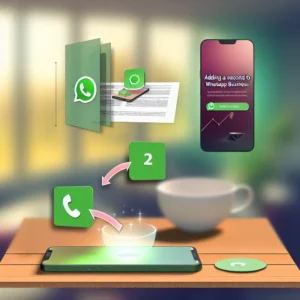As companies increasingly shift towards remote operations, understanding the nuances of remote customer service becomes paramount. Professionals encounter unique challenges, from miscommunication among teams to meeting diverse customer expectations. This article delves into key aspects of remote customer service, offering effective strategies and tools for success.
In a landscape where customer satisfaction dictates business success, companies must adapt to modern customer service requirements. Remote customer service can be highly effective when implemented correctly. With the right strategies and tools, businesses can improve customer relationships while maintaining high operational efficiency. For instance, utilizing an automated customer service strategy can be beneficial.
In exploring the importance of remote customer service, this article will cover essential tips, challenges faced, and benefits that offer actionable insights for professionals striving for excellence in this domain.
Understanding Remote Customer Service: Definition and Importance
Remote customer service encompasses any support offered over digital platforms, eliminating the need for face-to-face interactions. This approach has gained momentum, especially with the remote work trend. By going digital, you can reach a broader audience and enhance service efficiency.
You enhance customer satisfaction through remote customer service by meeting evolving consumer expectations. Today, customers desire quick solutions via channels such as email, chat, and social media. Consequently, effective communication strengthens relationships and enriches customer experiences. Implementing a WhatsApp Business strategy can significantly improve this communication.
“TechSolutions improved response times by 30% by utilizing a centralized system for all customer inquiries, resulting in a 25% increase in positive feedback.”
Training your team effectively is crucial. Equip your customer service representatives with problem-solving techniques and communication skills suitable for a virtual environment. Tools like chatbots can automate basic inquiries, allowing your team to focus on complex issues.
Lastly, by adopting remote customer service strategies, your business can benefit from cost savings. Eliminating the need for physical spaces reduces overhead while allowing for scalable support. As your customer base grows, you can expand your service without substantial investments.
Essential Tips for Effective Remote Customer Service
To build strong customer relationships, ensure your team has reliable customer support tools. Platforms like chatbots and CRM systems streamline communication, increasing response rates and customer satisfaction. Utilizing an advanced customer support platform can elevate your service standards.
- Establish clear communication protocols
- Implement consistent training on best practices
- Utilize customer data for personalization
- Allow flexibility for team members to adjust their hours
“HealthConnect saw a 30% improvement in customer interactions after streamlining their communication protocols and implementing regular training sessions.”
Personalization in customer interactions also plays a crucial role. Utilize customer data to remember past inquiries and preferences. This approach builds trust and fosters loyalty.
Flexibility should be fundamental in your strategy. Allow team members to adjust their hours to enhance their performance, fostering a results-oriented culture that embraces productivity and satisfaction.
Key Challenges in Remote Customer Service and How to Overcome Them
Despite its advantages, remote customer service has specific challenges. Communication clarity is a significant issue. Miscommunications may occur without non-verbal cues, leading to frustrations. Implementing tools like omnichannel support tools can help mitigate these issues.
“CloudTech implemented regular video conferences, resulting in a 50% decrease in communication-related errors.”
Another challenge lies in inconsistent customer support due to time differences. A rotating schedule that accommodates various time zones is essential. Automating responses during off-hours enhances customer experience significantly.
Isolation can also affect remote agents. Fostering a positive team culture with regular check-ins and virtual team-building activities helps maintain morale and improves productivity.
Training difficulties can arise as traditional methods are not feasible. Transition to online training modules that include practical scenarios, allowing representatives to prepare thoroughly for real-life situations.
Benefits of Implementing Remote Customer Service Solutions
Implementing remote customer service solutions enhances accessibility significantly. By offering 24/7 support, you can cater to a diverse clientele, thereby increasing customer satisfaction.
The cost-effectiveness of remote service is another major advantage. Businesses save by reducing overhead costs tied to physical office spaces. This frees up resources for investing in customer support tools.
“EcomPlus implemented remote customer solutions, resulting in a 20% increase in profit margins by reallocating saved funds for enhancing their customer support technology.”
Recruiting a diverse talent pool unrestricted by geography improves service quality as unique perspectives contribute to innovation in problem-solving.
Lastly, utilizing customer support tools like chatbots streamlines communication and enables real-time interaction. This leads to faster resolutions and enhanced customer satisfaction.
Top 10 Tools for Remote Customer Service
To successfully navigate remote customer service, your choice of tools is crucial. Here are the top 10 tools designed for remote work environments:
- Zendesk: Simplifies ticket management with an intuitive interface for tracking customer queries.
- Freshdesk: Automates repetitive tasks, enhancing productivity.
- Intercom: Combines chat, email, and social media messaging for seamless communication.
- Slack: Enhances collaboration through direct messaging and channels.
- WhatsApp Business: Connects directly with customers, automating responses via the WhatsApp Chatbot.
- Salesforce Service Cloud: Ideal for tracking customer interactions across multiple channels.
- HubSpot Service Hub: Integrates ticket management with a customer knowledge base.
- Help Scout: Fosters collaboration with shared inbox features.
- Microsoft Teams: Enhances team collaboration through video calls and file sharing.
- Sprout Social: Specializes in managing inquiries across social media platforms effectively.
Best Practices for Training Remote Customer Service Teams
To maintain high support standards, implement structured training programs focusing on technical skills and customer interaction. This dual approach ensures agents can handle inquiries efficiently.
Leverage technology by utilizing customer support tools for interactive training modules. Tailoring content to specific roles enhances engagement.
“LearnServe developed specialized training, leading to a 15% increase in customer satisfaction scores.”
Incorporate regular role-playing sessions to refine communication skills. This method enhances team cohesion while allowing agents to learn collaboratively.
Encouraging continuous learning also fosters knowledge growth. Support team members seeking further certification; a well-informed team enhances overall service quality.
The Future of Remote Customer Service: Trends and Innovations
The evolution of remote customer service is evident with emerging technological trends. The integration of AI streamlines processes while improving customer interactions, providing 24/7 support through AI-powered tools like the WhatsApp Chatbot.
“QuickSupport implemented innovative training, enhancing response times by 20%.”
Moreover, fostering a strong team culture through regular communication boosts morale, directly impacting service quality. The shift towards omnichannel support highlights customers’ expectations for seamless experiences across platforms. Remote teams need integrated tools to ensure accessibility and personalized support.
Data analytics will continue driving effective strategies, allowing businesses to refine approaches based on customer preferences and behaviors.
As remote work becomes commonplace, emphasize employee well-being. Supporting mental health leads to more productive customer interactions and improvements in service delivery.
Measuring Success in Remote Customer Service: Metrics to Track
Tracking success in remote customer service is critical. Start with the customer satisfaction rating (CSAT) to gauge service effectiveness. High scores reflect successful efforts, while low scores highlight improvement areas.
- Monitor first response time to optimize staffing needs during peak hours.
- Resolution time remains a vital measure to foster loyalty.
- Evaluate customer loyalty through the Net Promoter Score (NPS).
Utilizing customer support tools effectively, especially chatbots, enhances performance and ensures prompt responses to customer inquiries, driving success in remote customer service.
Success Stories: Companies Excelling in Remote Customer Service
Companies like Zappos demonstrate the potential of remote customer service. By providing extensive training and empowering agents, Zappos has cultivated a culture of prioritizing customer experience, boosting loyalty and brand reputation.
“Buffer leverages tools like Slack for effective communication, resulting in consistently high customer support performance.”
Adobe improved its customer support by focusing on specialized training, which has resulted in tailored solutions for customers and substantial feedback loops for continuous improvement measures.
Additionally, Slack leverages its platform for enhancing communication among its customer support team while delivering fast and effective assistance.
By employing innovative technologies and fostering flexible work arrangements, these companies illustrate how remote customer service can redefine expectations, enhance loyalty, and promote success.
Embracing the Future of Remote Customer Service
The adaptation of remote customer service meets changing consumer expectations and technological trends. By investing in effective tools like the WhatsApp Chatbot, businesses can provide seamless communication and fast assistance.
Establishing cohesive teamwork through collaboration and feedback loops fosters a supportive environment. Prioritizing employee well-being translates to enhanced customer interactions and satisfaction.
Future trends, including AI-driven analytics and omnichannel support, will continuously evolve the way businesses engage customers, ensuring seamless experiences that withstand market demands.
Ultimately, embracing remote customer service means recognizing long-term benefits. By fostering flexibility, effective communication, and integrating innovative tools, organizations position themselves to thrive in the competitive landscape of remote customer support.
For further insights on optimizing your remote customer service strategy, explore innovative technologies such as WhatsApp Chatbots.









